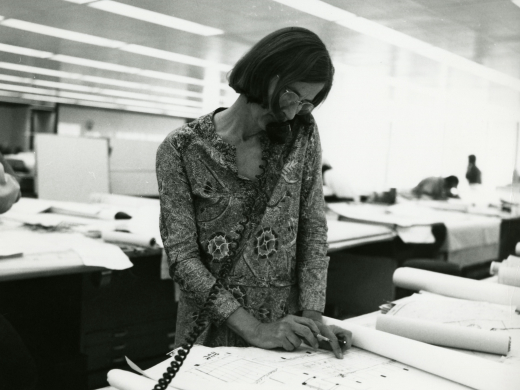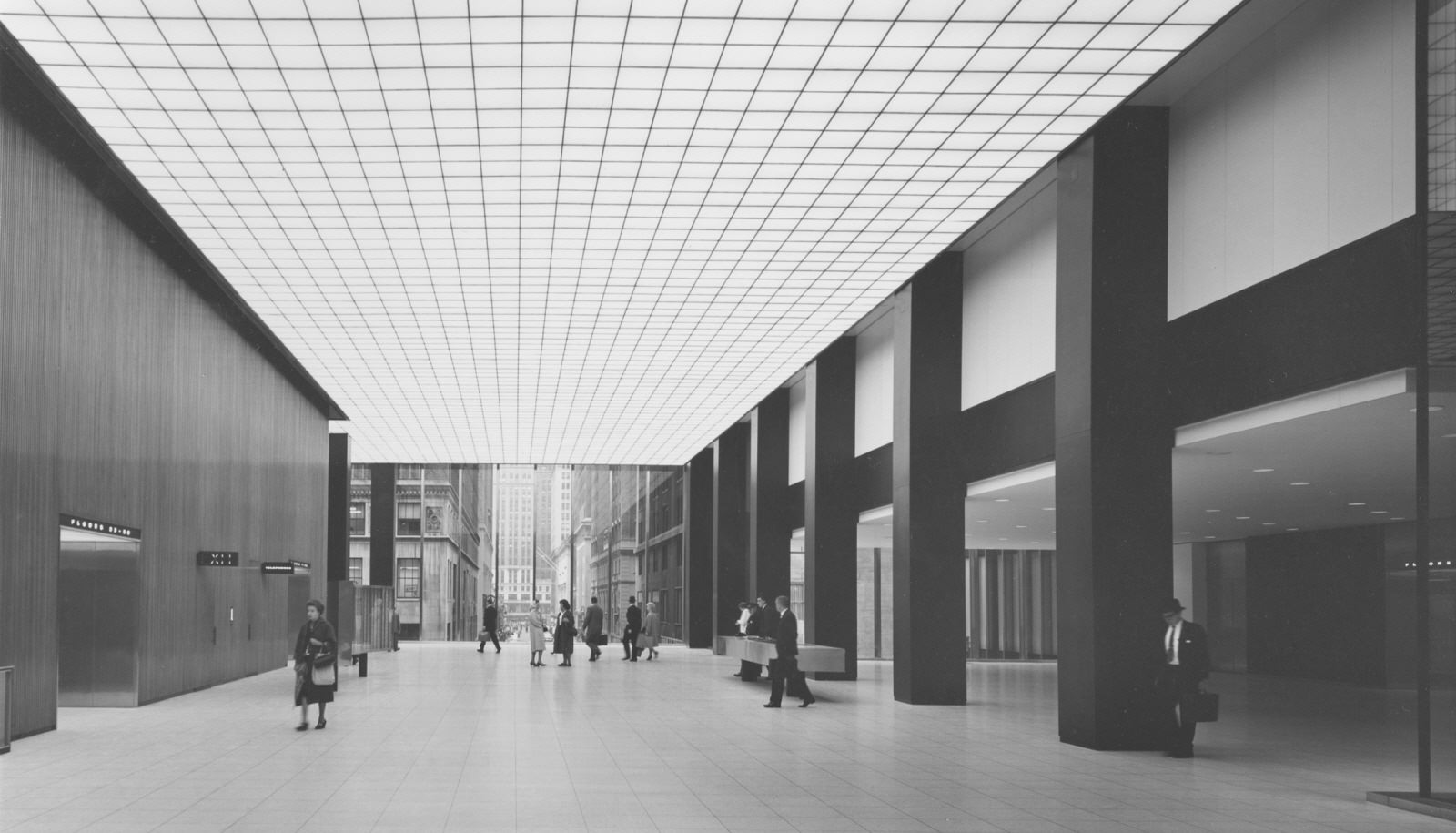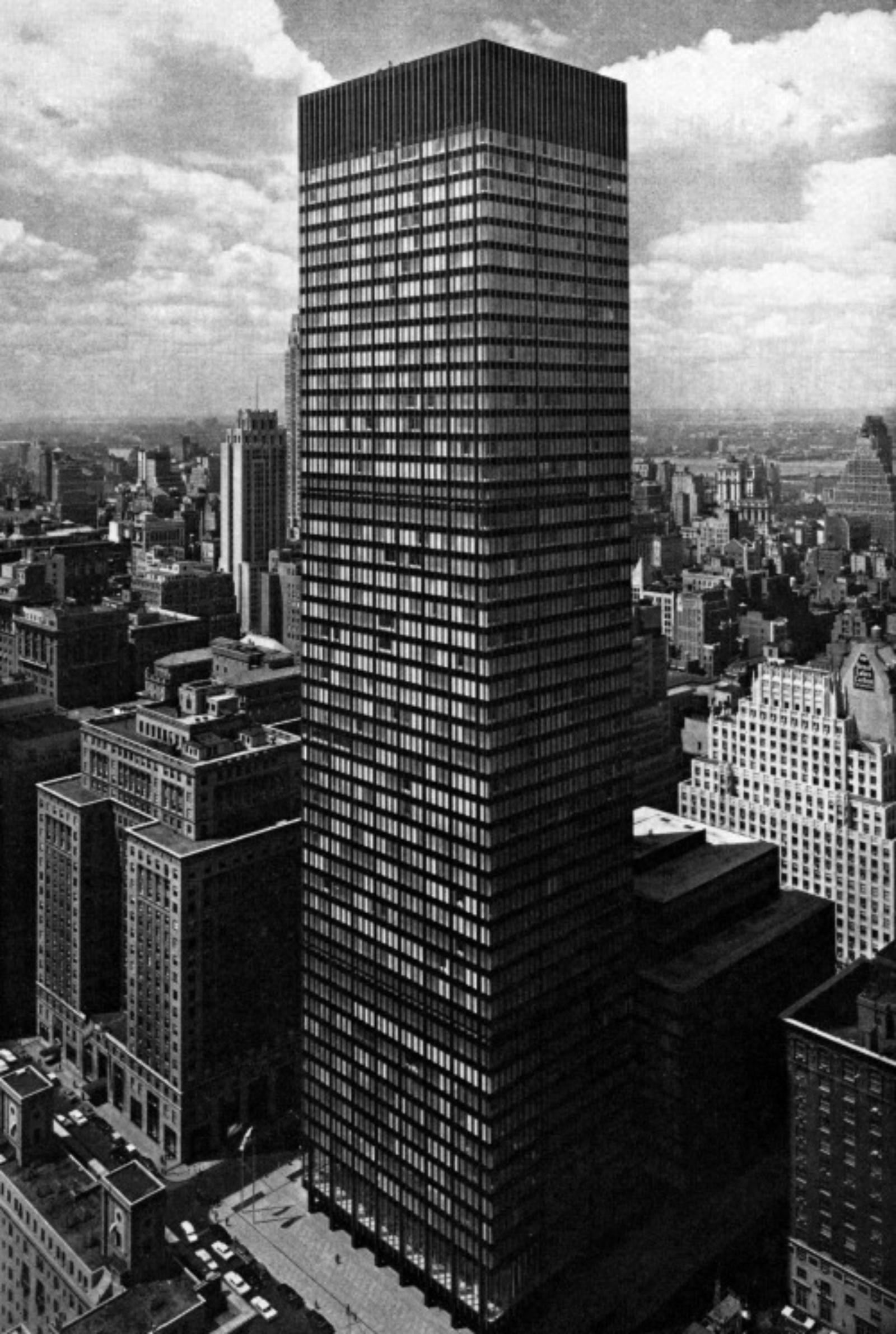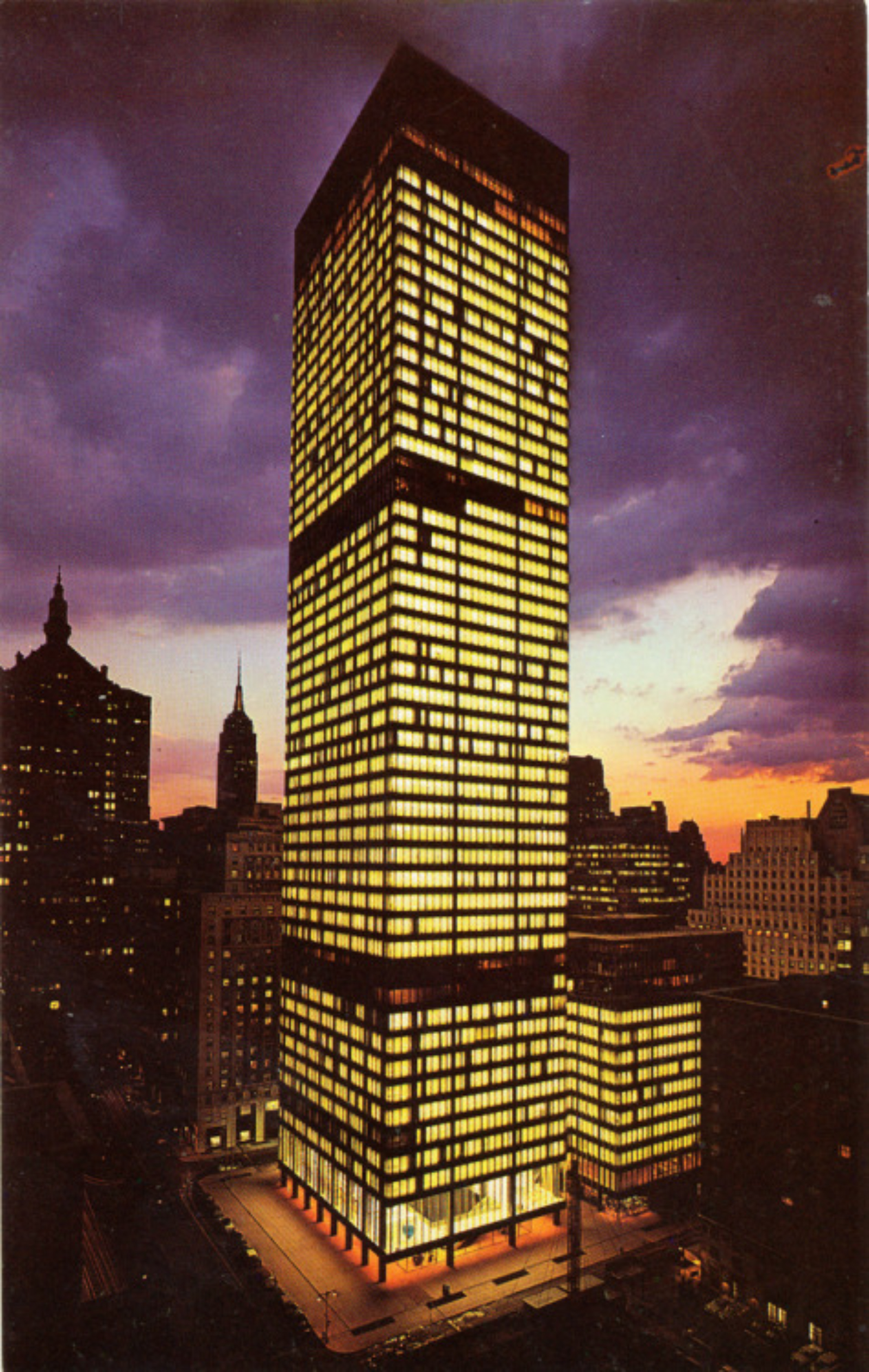Primary classification
Designations
The NYC Landmarks Preservation Commission refused to consider the building for designation even though the office found it eligible.
Location
270 Park AvenueNew York, NY
Country
USA
Case Study House No. 21
Lorem ipsum dolor
Designer(s)

Gordon Bunshaft
Architect
Nationality
American
Affiliation
Skidmore, Ownings & Merrill

Natalie de Blois
Architect
Nationality
American

Skidmore Owings & Merrill (SOM)
Other designers
Gordon Bunshaft, Natalie de Blois





